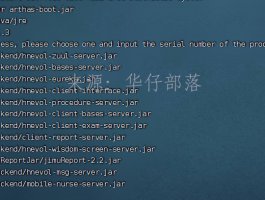在java后端编程中,我们时常会有这种需求,将一个List<T>转换成一Map<String,List<T>>。比如,T是User对象,String是User对象的deptId,科室ID,需要将相同科室的用户分到一个List中,并且以Map的形式映射List。那我们一般是怎么做的呢?
在java8之前,我们会这样做(忽略前面的查询数据),创建一个map,开始遍历List,过程中判断map中是否存在对应的key,有则取出list集合,将值添加进去。没有对应的key则new一个list,将值添加进去再put到map中。用了12行代码实现了这个功能。
itemList=qualityCheckItemService.list(Wraps.<QualityCheckItem>lbQ().like(QualityCheckItem::getItemName,itemName));
//按模板类型项目Map
Map<Integer, List<QualityCheckItem>> itemMap=new HashMap<Integer, List<QualityCheckItem>>();
if(CollectionUtils.isNotEmpty(itemList)){
for(QualityCheckItem item:itemList){
// map中存在该key
if(itemMap.containsKey(item.getTemplateTypeId())){
// 根据key取出list
List<QualityCheckItem> tempList= itemMap.get(item.getTemplateTypeId());
// 添加元素
tempList.add(item);
// 将集合put回map中 此步骤也可以不写
itemMap.put(item.getTemplateTypeId(),tempList);
}else{
// map中不存在该key 直接newList
List<QualityCheckItem> tempList=new ArrayList<QualityCheckItem>();
// 添加元素
tempList.add(item);
// 将集合put到map中
itemMap.put(item.getTemplateTypeId(),tempList);
}
} 那如果是利用java8的新特性,要如何处理呢?
itemList=qualityCheckItemService.list(Wraps.<QualityCheckItem>lbQ().like(QualityCheckItem::getItemName,itemName));
//按模板类型项目Map
Map<Integer, List<QualityCheckItem>> itemMap=new HashMap<Integer, List<QualityCheckItem>>();
if(CollectionUtils.isNotEmpty(itemList)){
// 根据模板类型对项目进行分类
itemMap=itemList.stream().collect(Collectors.groupingBy(QualityCheckItem::getTemplateTypeId,Collectors.toList()));
}一共四行代码实现该功能,使用stream流处理,Collectors.groupingBy分组处理,根据templateTypeId进行分组,将其作为key值,相同key值的对象生成List集合。
相关内容参考:
https://blog.csdn.net/u014231523/article/details/102535902






发表评论